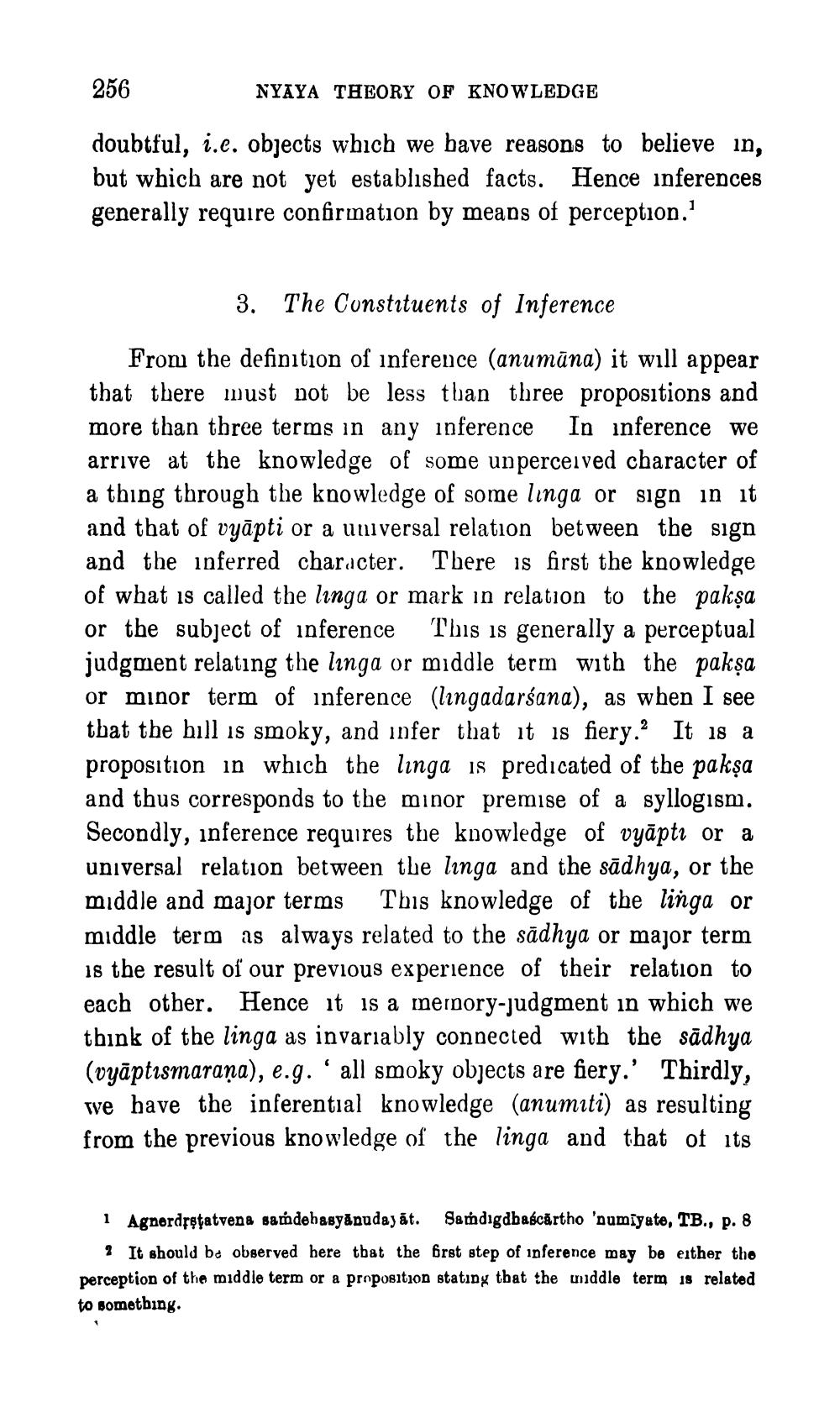________________
256
NYAYA THEORY OF KNOWLEDGE
doubtful, i.e. objects which we bave reasons to believe in, but which are not yet established facts. Hence inferences generally require confirmation by means of perception.'
3. The Constituents of Inference
From the definition of inference (anumāna) it will appear that there must not be less than three propositions and more than three terms in any inference in inference we arrive at the knowledge of some un perceived character of a thing through the knowledge of some linga or sign in it and that of vyāpti or a universal relation between the sign and the inferred character. There is first the knowledge of what is called the linga or mark in relation to the pakşa or the subject of inference This is generally a perceptual judgment relating the linga or middle term with the pakşa or minor term of inference (lingadarśana), as when I see that the bill is smoky, and infer that it is fiery. It is a proposition in which the linga is predicated of the pakşa and thus corresponds to the minor premise of a syllogism. Secondly, inference requires the knowledge of vyāptı or a universal relation between the linga and the sādhya, or the middle and major terms This knowledge of the linga or middle term as always related to the sādhya or major term is the result of our previous experience of their relation to each other. Hence it is a memory-judgment in which we think of the linga as invariably connected with the sādhya (vyāptismaraņa), e.g. 'all smoky objects are fiery.' Thirdly, we have the inferential knowledge (anumiti) as resulting from the previous knowledge of the linga and that of its
1 Agnordpstatvena sandeh asyåpudayāt. Sardigdbaścărtho 'numiyate, TB., p. 8
? It should be observed here tbat the frst step of inference may be either the perception of the middle term or a proposition stating that the middle term is related to something




